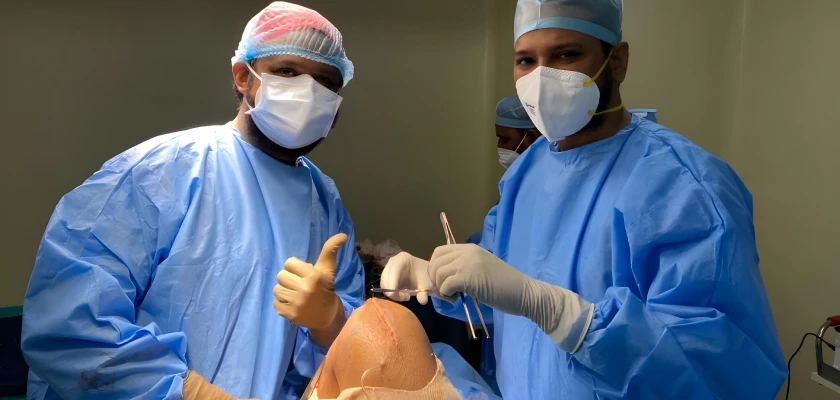
Knee pain caused by arthritis or injury can significantly impact daily life, limiting mobility and making even routine activities difficult. For individuals experiencing chronic knee pain that does not respond to conservative treatments, surgical options like Total Knee Replacement (TKR) or Partial Knee Replacement (PKR) may offer effective long-term relief.
Partial Knee Replacement, also known as Unicompartmental Knee Replacement, is a minimally invasive procedure specifically designed for patients whose arthritis or damage is confined to a single compartment of the knee. Unlike a total knee replacement, which involves resurfacing the entire knee joint, partial knee replacement targets only the damaged portion. This approach preserves healthy bone, cartilage, and ligaments, leading to a more natural-feeling knee post-surgery.
According to orthopedic specialists, partial knee replacement offers several advantages over total knee replacement for suitable candidates. These benefits include a smaller incision, reduced surgical trauma, minimal blood loss, and a significantly faster recovery period. In many cases, patients undergoing partial knee replacement require just a short hospital stay—sometimes only 24 hours—and are able to return to normal activities much sooner, often within a few weeks.
On the other hand, Total Knee Replacement is recommended when arthritis or damage affects multiple compartments of the knee joint. This comprehensive procedure involves replacing the entire surface of the knee with prosthetic components to restore joint function and eliminate pain. While recovery may take a bit longer compared to partial knee replacement, total knee replacement offers excellent outcomes in terms of pain relief and improved mobility, especially for individuals with advanced joint degeneration.
Ultimately, the decision between total and partial knee replacement depends on the extent of joint damage, the patient’s age, activity level, and overall health. Consulting with an experienced orthopedic surgeon is essential to determine the most appropriate surgical option and ensure the best possible outcome.
With advancements in surgical techniques and post-operative care, both total and partial knee replacement procedures today are highly successful, offering patients renewed mobility, pain relief, and an improved quality of life.